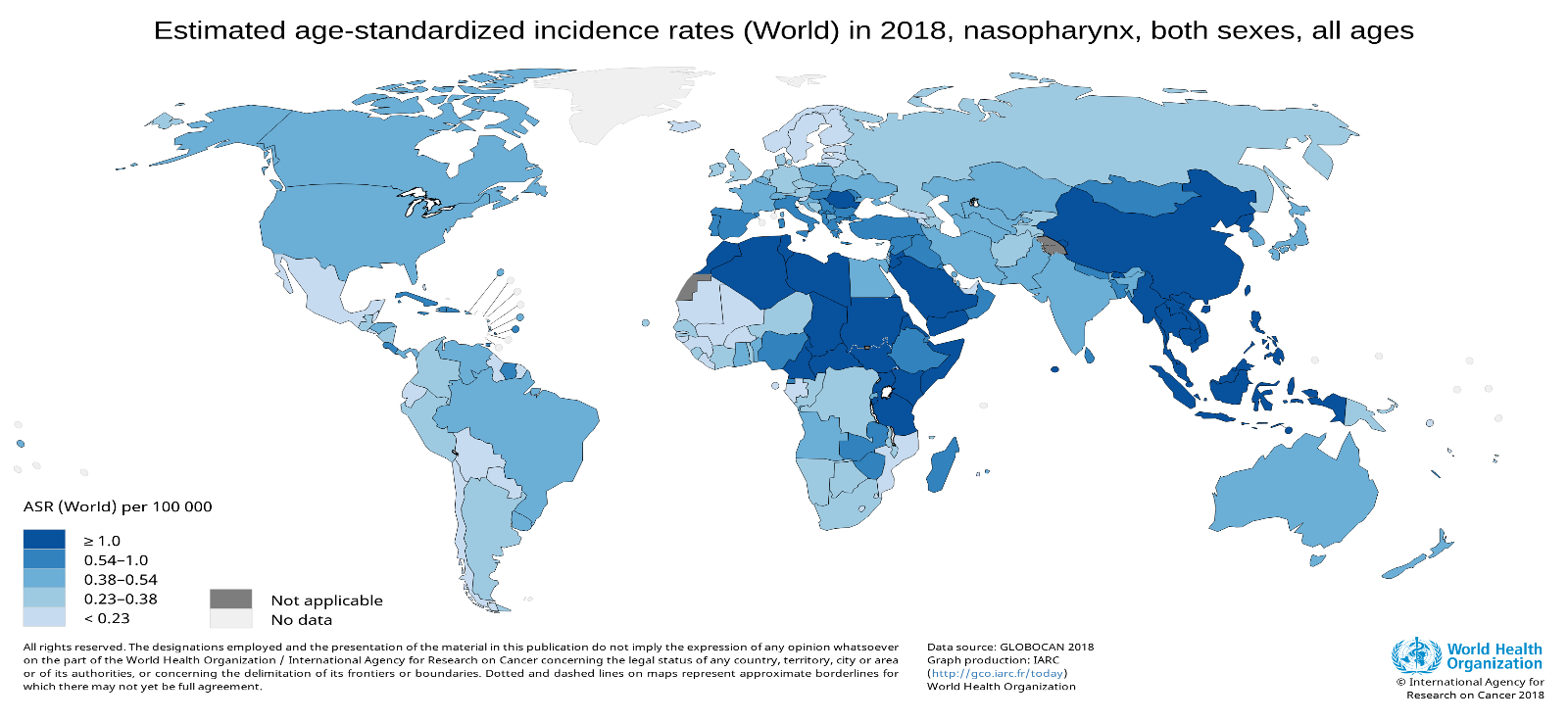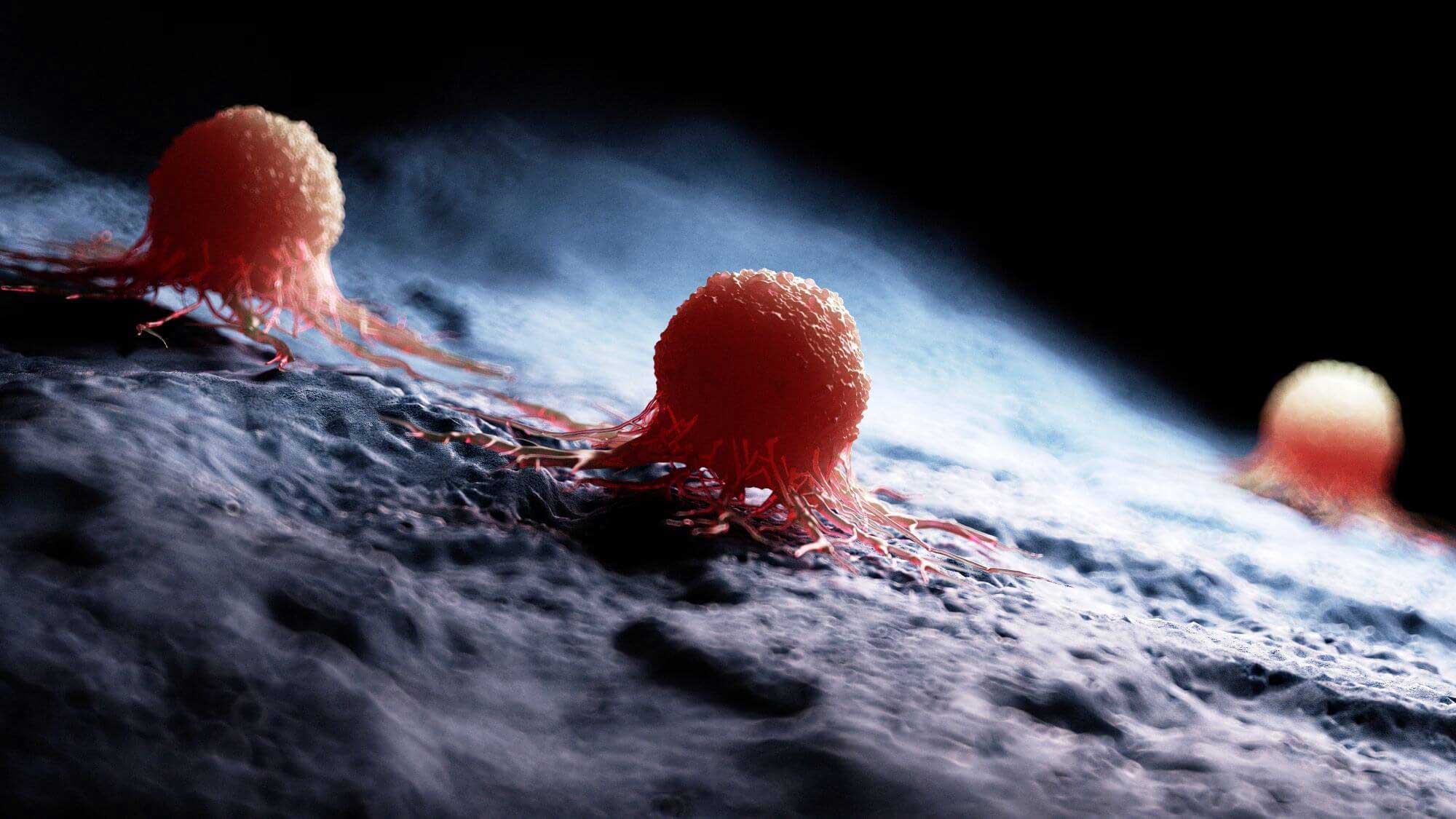It is commonly known that consumption of carcinogens such as alcohol and tobacco, as well as exposure to air pollution, can increase the risk of certain cancers in humans.
However, it is less well-known, particularly in regions where not traditionally consumed, that areca nut and Chinese-style salted fish are human carcinogens as well. For years, the insurance industry has charged higher premiums for applicants who use tobacco or drink alcohol to excess, but despite areca nut and Chinese-style salted fish also being Group 1 carcinogens to humans on the list maintained by the International Agency for Research on Cancer (IARC), insurance application forms currently ask no questions regarding their consumption. Hence, unless an applicant is already suffering from a condition associated with consumption of these items, or voluntarily discloses consumption, the same rates are charged as for a non-user, who would not be at additional risk of specific cancers such as oral and nasopharyngeal cancer related to their consumption. This paper addresses the health risks of both, and seeks to emphasize the importance of understanding these risks at underwriting stage.
Areca Nut and Betel Quid Use
Areca nut, also referred to as betel (or betel nut), is the world’s fourth most commonly used addictive and psychoactive substance, after caffeine, nicotine, and alcohol. Approximately 10% of the world’s population – about 600 million people – are estimated to use it on a regular basis.
Areca nuts are the seed of the fruit of Areca catechu, a species of tropical palm tree indigenous to Bangladesh, India, Maldives, Myanmar, Sri Lanka, Taiwan, and several South Pacific island nations. The nuts are widely consumed in these countries as well as in Cambodia, China, Indonesia, Laos, Malaysia, Pakistan, Thailand, and Vietnam. The U.S. and U.K., with their large populations of immigrants from Asian and Pacific countries, are also notable consumers of areca nut products.1
Products containing the areca nut are traditionally used to increase stamina and energy, gain a sense of well-being and even euphoria, and reduce feelings of fatigue. Its use is popular among working-class men. The nut can be consumed in several forms: green (unripe) or ripe; raw, boiled or roasted; dried; and cured. It is also frequently an ingredient in commercially available packets known as betel quid.
Betel quid generally consists of sliced or crushed areca nut mixed with calcium hydroxide (slaked lime), spices such as cardamom, coconut and saffron, and in some cases with tobacco, to make a packet known as “betel quid” (BQ), as the areca nut is usually wrapped in the leaf of the Piper betle plant. The saliva produced, as well as the contents of the packets themselves, are also often swallowed.2
The composition of betel quid packets depends on what is traditional in their country of origin. In India, for example, packets made without tobacco, called pan (also spelled paan), are sold in ready-to-chew pouches known as pan masala. Gutka, packets containing areca nut and tobacco, is one of the most common smokeless tobacco products used by men in India. Brightly colored gutka and pan masala packets are commonly advertised as mouth fresheners in India and are sold for as little as 4 rupees (5 cents U.S.) each, making them attractive to young adolescents. Khaini (chewing tobacco with slaked lime) and gutka are the most common smokeless tobacco products used by men in India. Other betel quid preparations used in India include supari, a blend of areca nut, sugar, spices, and flavorings, and mawa, consisting of areca nut, tobacco, and slaked lime.
South and East Asian migrants to the U.K. often start chewing pan masala at very early ages and move on to mixes containing tobacco in young adulthood.3,4
Table 1:
Composition of various betel quid products 5
Product | Areca nut | Betel leaf | Betel inflorescence | Betel stem | Catechu | Tobacco | Slaked lime |
|---|
Betel quid (without tobacco) | X | X | | | X | | X |
Betel quid (with tobacco) | X | X | | | X | X | X |
Gutka | X | | | | X | X | X |
Pan masala | X | | | | X | | X |
Khaini (without areca) | | | | | | X | X |
Mawa | X | | | | | X | X |
Mainpuri tobacco (with areca) | X | | | | | X | X |
Lao-hwa quid (Taiwan) | X | | X | | | | X |
Betel quid (Taiwan) | X | X | | | | | X |
Stem quid (Taiwan) | X | | | X | | | X |
In 2004, the International Agency for Research on Cancer (IARC) classified areca nut itself and betel quid (whether containing areca nut or not) as Group 1 human carcinogens. There is sufficient evidence that betel quid products without tobacco cause oral cancers and cancer of the liver, and that betel quid products containing tobacco cause cancer of the pharynx and the esophagus.6
The Science Part
The areca nut contains four arecal alkaloids – arecoline, arecaidine, guvacine and guvacoline. Arecoline is a psychoactive agent and the main alkaloid in areca nut. All four alkaloids have the potential to cause cancer in humans through the formation of nitrosamines – a group of chemical compounds that are frequently carcinogenic.6
Studies have also shown that the interaction of slaked lime and areca nut polyphenols generates reactive oxygen species (more commonly known as free radicals), which play a fundamental role in the development of oral and pharyngeal cancers. In addition, as betel quid users frequently swallow rather than spit the juice, their internal exposure to nitrosamines is increased, inducing abnormal cell growth and cancers.7
Prevalence of Use
While betel quid use appears to be declining in Cambodia, Indonesia, Thailand, and Vietnam, it is still extremely popular in India, Pakistan, and Taiwan. Worryingly, use of pan masala and gutka has been increasing among children and adolescents in recent years. According to the IARC, prevalence of use of these products in India is about 30% of men and 7% of women, and in Pakistan is 30% to 40% of all adults. In Taiwan, national studies show that 20.9% of men and 1.2% of women use betel quid.
In the Pacific Islands, prevalence is quite high: 72% of men and 80% of women in Palau and 83% of men and 68.4% of women in the Solomon Islands chew betel quid. Prevalence is thought to be around 40% of adult villagers of Kishore Ganj in rural Bangladesh and around 17% of adults in rural Thailand. In the U.K., immigrants from Bangladesh have the highest prevalence of betel quid use in the country.5
Legislation
At present, policies to control the use of betel quid differ by country. In India, despite the ban on the sale of gutka in all states and union territories, manufacturers evade the bans by making novel products containing areca nut such as drinks or selling the gutka ingredients (tobacco and pan masala) separately.8
Australia and Canada have banned the sale of areca nut, and the U.S. Food and Drug Administration (FDA) bans import of some forms of areca nut as well as the interstate movement of areca nut. In the U.K., however, areca nuts are readily available and can be bought in Asian grocery stores.9
Dependency
Not only does betel nut chewing increase the risk of early morbidity and mortality, it can also lead to physical dependency. The arecoline alkaloids pass through the blood-brain barrier and have been found to be similarly addictive to tobacco and alcohol 7 Areca nut chewers who develop dependency syndrome can experience withdrawal symptoms such as irritability, paranoia, anxiety, poor concentration, and disrupted sleep.1, 3
Cancers
In 2012, lip, oral cavity, and pharyngeal cancers accounted for more than half a million cases worldwide, and an estimated 42,000 of those cases were new diagnoses. While human papilloma virus types HPV 16 and HPV 18 were responsible for many of the cases, tobacco and areca nut use were primary causes of oral cancers in India and Sri Lanka.
The oral cavity cancer rate worldwide in 2012 was highest in south-central Asia (40.9% of all incident cases) and in Papua New Guinea, which had the highest age-standardized rate (ASR) at 10.6 cases per 100,000. This compares to a global ASR of 2.7 per 100,000. Incidence of oral cancer in China is highest in central and south China, where betel nut chewing is popular.10
Studies in the U.S. indicate that incidence of oral cancer is also rising, possibly due to increases in populations of ethnic groups known to consume areca nut.11
Almost 80% of oral and pharyngeal cancer patients in Taiwan are betel quid chewers, and they develop these cancers on average 10 years earlier than non-chewers.7 Betel quid-related cancers usually occur in individuals between the ages of 45 and 65, with a mean age at diagnosis of 50 years for oral cancer.12
Areca nut chewing can lead to higher occurrence of periodontitis as well as abnormal facial features due to varying degrees of fibrosis, known as gutka’s (or areca nut chewer’s) syndrome. Long-term gutka users often have very distinct speech as well, as they are unable to pronounce words correctly due to progressive oral submucous fibrosis (OSF).
The risk of oral leucoplakia and erythroplakia is also notably raised in areca nut chewers. Studies from Sri Lanka and Taiwan have shown that relative risk (RR) for oral leucoplakia in betel quid chewers without tobacco was RR 8.40 (95% confidence interval [CI]: 5.13 - 13.75) in Taiwan and RR 3.01 (95% CI: 2.25 - 4.0) in Sri Lanka. 2, 5, 9
Leukoplakia, erythroplakia, and OSF are considered premalignant lesions. Approximately 18% will develop into squamous cell carcinoma. Malignant transformation in OSF has been reported in the range of 2% to 13%. Betel nut chewers are also at high risk of developing esophageal cancer and hepatocellular cancer.13
Health effects
Areca nut chewing has been strongly associated with cardiovascular disease (CVD) risk factors such as obesity, hypertension, diabetes, and metabolic syndrome. Chewing betel quid has a central sympathetic effect, causing increased heart rate and blood flow in the external and common carotid arteries. It may also reduce the activity of available vitamin D, a potential risk factor for CVD as well as metabolic syndrome and non-insulin dependent diabetes mellitus (NIDDM).14 It has been linked as well to a number of additional conditions, including uterine cervical dysplasia, albuminuria in diabetic patients, aggravation of asthmatic symptoms, anemia, and adverse pregnancy outcomes, but it is as yet unclear if areca nut chewing with tobacco has similar effects as smoking cigarettes.7, 15
Chinese style (Cantonese) salted fish
The IARC states that Chinese style salted fish is carcinogenic to humans (Group 1) as there is sufficient evidence to show that it is associated with nasopharyngeal cancer (NPC) and limited evidence to support an association with stomach cancer.
In China, salted fish is considered an important and cost-effective source of protein for the general population. A wide variety of fish is used, including red snapper, threadfin, Spanish and Japanese mackerel, and croaker. In China, small fish are not usually gutted before salting. The process of salting involves placing a whole fish, bones, guts and all, into salt-filled wooden vats, and then into brine for one to five days. The fish are then dried out for one to seven days. Sometimes before the salting process begins, the fish are allowed to partially decompose, producing a softer product. The salted fish is then stored for four to five months before being eaten.5 In Indonesia, salted fish is not stored before ready for consumption, possibly explaining lower levels of N-nitrosamines and hence lower nasopharyngeal cancer (NPC) rates in Indonesia.16
Chinese-style salted fish is very popular along the south coast of China as well as in Southeast Asia. Although small amounts (up to 10 grams) are served per portion, portions are often served with every meal. Prevalence of consumption varies from 4% to 48% in southern China, where it is traditionally fed to young infants and children. In recent decades, however, salted fish consumption has been decreasing, particularly in Hong Kong and Singapore, possibly as a result of a change in dietary culture due to Westernization of dietary patterns.17
It would appear that hard and soft salted fish have different risk profiles in the development of NPC. It has been difficult for researchers to make a clear association between consumption of salted fish and the increased risk of cancer as the composition of carcinogens in the fish can vary depending on the method of preparation. For example, levels of the carcinogen N-nitrosodimethylamine (NDMA), a by-product of uncooked salted fish, can vary significantly, from undetectable to 388 ug/kg.18
Nasopharyngeal cancer
Worldwide, NPC is a rare cancer. However, Asia has more than 80% of the world’s cases, and 71% of all new cases are in East and Southeast Asia. Environmental factors such as dietary culture are primarily responsible for this high incidence. Survival rates, if diagnosed at stage I or II, are approximately 95% but fall to just over 50% for stage III or IV.18,19 Peak incidence rates of NPC are found in individuals between the ages of 45 and 54 who eat Chinese-style salted fish, usually due to the fact that these age groups were commonly fed this food early in their lives.5, 20
Figure 2:
Estimated age-standardized incidence rates (World) in 2018, nasopharyngeal cancer, both sexes, all ages21

A 2010 study that included nearly 3,000 participants from Guangdong, China found that the consumption of Cantonese (Chinese-style) salted fish, preserved vegetables and preserved and/or cured meats, was significantly associated with an increased risk of NPC. Consumption of salted fish is a risk factor for NPC, with an elevated odds ratio (OR) of 2.45 (95% CI: 2.03 - 2.94) at the highest amounts.20 Several other studies have also found an association between the consumption of salted fish and NPC, showing a range of ORs of 2.42, 2.54 and 1.90.16
Some data has shown that salted fish extracts can reactivate Epstein-Barr virus (EBV), which is involved in the carcinogenesis of NPC.18 Other preserved foods, such as harissa (a North African spice mix), salted fish from Greenland, and shrimp paste, have also been shown to reactivate EBV.5 NPC risk factors include a family history of the conditions, use of certain herbal medicines, chronic respiratory tract infections, human leukocyte antigen (HLA) class I genotypes, and occupational exposure to fumes, smoke, dust, or chemicals.22 Bottom line: the combined role of genetics with the consumption of salted fish should not be ignored.
Additional health risks
The association between salted fish and stomach cancer has been investigated in several studies. Of five studies investigating the association between Chinese-style salted fish and incidence of stomach cancer, the ORs ranged from 3.4 to 5.7 in the most exposed group (those that ate salted fish at least three times a week). In addition, higher consumption of sodium from salt-preserved foods is also associated with higher CVD risk.5, 23
Conclusions
Both areca nut and Chinese-style salted fish are listed as Group 1 carcinogens to humans by the IARC. The listing is based on sufficient evidence to show that areca nut, one of the main components of betel quid, is a cause of oral cancer, and Chinese-style salted fish is a cause of NPC. Areca nut chewing not only increases the risk of developing oral cancer but also increases the risk of diseases including oral submucous fibrosis, leucoplakia, CVD, cancers of the esophagus, stomach and liver, and type 2 diabetes. Chinese-style salted fish primarily increases the risk of developing NPC and also the risk of gastrointestinal cancers.
Insurance application forms, particularly those used in South Asia and Southeast Asia, do not currently ask questions regarding consumption of either. This area of underwriting risk should be further addressed.




